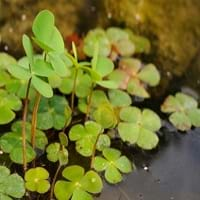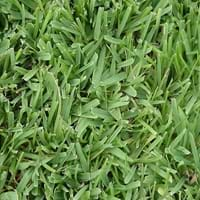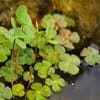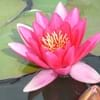About Water Clover and Seashore Paspalum
Life Span
Perennial
Perennial
Origin
Australia
World/Pandemic
Types
Marsilea quadrifolia, Marsilea hirsuta
Not Available
Habitat
Bog Garden, Cultivated Beds
Subtropical climates, Tropical regions
USDA Hardiness Zone
9-11
8-10
AHS Heat Zone
12-9
Not Available
Sunset Zone
21,22
H2, 17, 24
Habit
Mat-forming
Mat-forming
Minimum Width
Not Available
Flower Color
Not Available
Green, White
Flower Color Modifier
Not Available
Bicolor
Fruit Color
Non Fruiting Plant
Non Fruiting Plant
Leaf Color in Spring
Green, Light Green
Green
Leaf Color in Summer
Green, Light Green
Light Green
Leaf Color in Fall
Green
Green
Leaf Color in Winter
Green
Green
Leaf Shape
Four wedge-shaped leaflets
Lance shaped
Plant Season
Spring, Summer, Fall, Winter
Spring, Summer, Fall, Winter
Sunlight
Full Sun, Partial Sun
Full Sun, Partial Sun
Type of Soil
Loam, Sand
Clay, Loam, Sand
The pH of Soil
Acidic, Neutral
Neutral, Alkaline
Soil Drainage
Poorly Drained
Average
Bloom Time
Not Available
Spring, Late Spring, Early Summer, Summer, Late Summer
Tolerances
Wet Site
Pollution, Salt, Soil Compaction
Where to Plant?
Container, Ground, Pot
Ground
How to Plant?
Spores
Sprigging or Stolonizing
Plant Maintenance
Medium
Medium
Watering Requirements
Needs very little water
Needs more water during establishment
In Summer
Lots of watering
Lots of watering
In Spring
Moderate
Moderate
In Winter
Average Water
Average Water
Soil pH
Acidic, Neutral
Neutral, Alkaline
Soil Type
Loam, Sand
Clay, Loam, Sand
Soil Drainage Capacity
Poorly Drained
Average
Sun Exposure
Full Sun, Partial Sun
Full Sun, Partial Sun
Pruning
Remove damaged leaves, Remove dead branches, Remove dead leaves
Remove damaged leaves, Remove dead branches, Remove dead leaves
Fertilizers
Organic Manure
organic fertlizers
Pests and Diseases
Aphids, Clover Clot
Dollar spot, Leaf spot
Plant Tolerance
Drought
Drought
Flowers
None
Insignificant
Flower Petal Number
Not Available
Single
Fragrant Fruit
Not Available
No
Foliage Texture
Medium
Fine
Foliage Sheen
Matte
Matte
Invasive
Sometimes
Sometimes
Attracts
Frogs
Billbugs, Crickets, Cutworms
Allergy
Beriberi, Toxic
Not Available
Aesthetic Uses
Ground Cover
Ground Cover
Beauty Benefits
Not Available
Not Available
Environmental Uses
Fixes Nitrogen
Erosion control
Medicinal Uses
Astringent
No Medicinal Use
Part of Plant Used
Seeds, Spores
Not Available
Other Uses
Used like flour, Used to make dough
Used as a golf course turf, Used to feed livestock
Used As Indoor Plant
Yes
No
Used As Outdoor Plant
Yes
Yes
Garden Design
Container, Houseplant, Tropical, Water Gardens
Lawns and Turf
Botanical Name
MARSILEA drummondii
PASPALUM vaginatum
Common Name
Common Nardoo, Pepperwort, Water Clover
Biscuit Grass, Seashore Paspalum
In Hindi
Water Clover
Seashore Paspalum
In German
Wasser Klee
Seashore Paspalum
In French
Eau Clover
Seashore Paspalum
In Spanish
Agua trébol
Paspalum
In Greek
νερό Clover
Αιγιαλός Paspalum
In Portuguese
Clover água
seashore Paspalum
In Polish
Woda Clover
Nad morzem Paspalum
In Latin
Trifolium aqua
Paspalum maris
Phylum
Pteridophyta
Magnoliophyta
Class
Filicopsida
Lilopsida
Order
Hydropteridales
Cyperales
Family
Marsileaceae
Poaceae
Clade
Not Available
Angiosperms, Commelinids, Monocots
Tribe
Not Available
Paniceae
Subfamily
Not Available
Panicoideae
Number of Species
Not Available
Not Available
Properties of Water Clover and Seashore Paspalum
Wondering what are the properties of Water Clover and Seashore Paspalum? We provide you with everything About Water Clover and Seashore Paspalum. Water Clover doesn't have thorns and Seashore Paspalum doesn't have thorns. Also Water Clover does not have fragrant flowers. Water Clover has allergic reactions like Beriberi and Toxic and Seashore Paspalum has allergic reactions like Beriberi and Toxic. Compare all the properties and characteristics of these two plants. Find out which of these plant can be used as indoor plant. If you are interested to decorate your house and garden, find out aesthetic uses, compare them and select the plant which will beautify your surrounding. Along with beautification, try comparing medicinal and edible uses of Water Clover and Seashore Paspalum and you can choose the plant having best and most benefits.
Season and Care of Water Clover and Seashore Paspalum
Season and care of Water Clover and Seashore Paspalum is important to know. While considering everything about Water Clover and Seashore Paspalum Care, growing season is an essential factor. Water Clover season is Spring, Summer, Fall and Winter and Seashore Paspalum season is Spring, Summer, Fall and Winter. The type of soil for Water Clover is Loam, Sand and for Seashore Paspalum is Clay, Loam, Sand while the PH of soil for Water Clover is Acidic, Neutral and for Seashore Paspalum is Neutral, Alkaline.
Water Clover and Seashore Paspalum Physical Information
Water Clover and Seashore Paspalum physical information is very important for comparison. Water Clover height is 10.20 cm and width 30.00 cm whereas Seashore Paspalum height is 2.50 cm and width Not Available. The color specification of Water Clover and Seashore Paspalum are as follows:
Water Clover flower color: Not Available
Water Clover leaf color: Green and Light Green
Seashore Paspalum flower color: Green and White
- Seashore Paspalum leaf color: Green
Care of Water Clover and Seashore Paspalum
Care of Water Clover and Seashore Paspalum include pruning, fertilizers, watering etc. Water Clover pruning is done Remove damaged leaves, Remove dead branches and Remove dead leaves and Seashore Paspalum pruning is done Remove damaged leaves, Remove dead branches and Remove dead leaves. In summer Water Clover needs Lots of watering and in winter, it needs Average Water. Whereas, in summer Seashore Paspalum needs Lots of watering and in winter, it needs Average Water.





